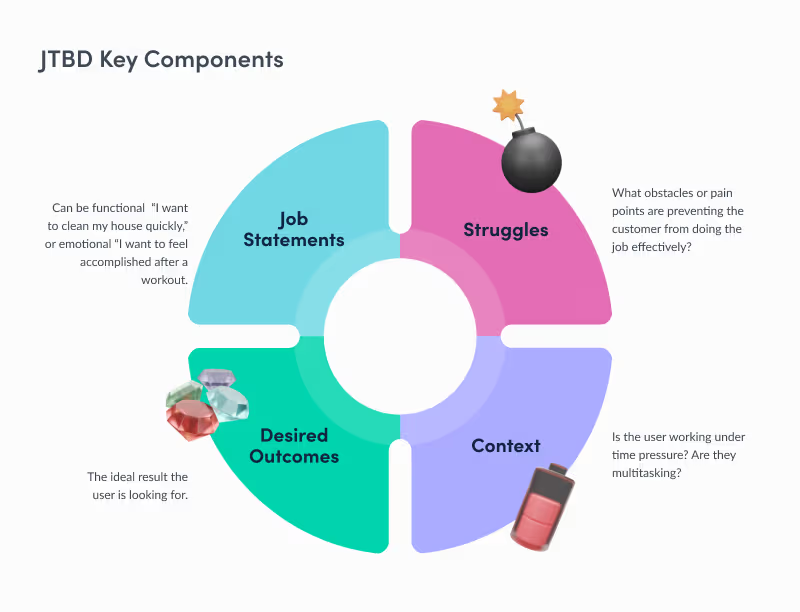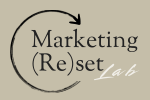Over the past few weeks, I’ve been having multiple conversations about product-market fit (PMF) with many different people, from different places and environments, that I even found curious the synergy of the topic.
Coincidence or not, the fact is that PMF seems to be top of mind these days, especially because it’s one of those terms that gets thrown around a lot in startup meetings, investor decks, and marketing strategy sessions.
But what does it really mean in practice? For me, PMF is simple: it’s when a product actually responds to a real market demand. Sometimes that demand is clear, other times, it needs to be uncovered or even created through smart, targeted education.
Too often, founders launch products based on assumptions, gut feelings, or visionary ideas, without investing in the groundwork to validate their fit in the market. I’ve seen this pattern play out repeatedly over the course of my career, and the big question is: should you wait for the development and launch (or re-launch) of your product until you have a complete PMF analysis? In my opinion, the answer is: it depends.
Although the solid PMF study is mandatory and crucial for the success of a product, it can be adjusted after a product launch, or conducted over the course of the product launch. One thing is clear: the investment of building a strong foundation is worthwhile. The good news is that even if you’re uncertain about your PMF, there are practical ways to validate it quickly.
Step 1: Acknowledge the gap between product and market
Many companies assume they have product-market fit simply because they believe in what they’re building. But belief isn’t validation. When I work with startups, my first instinct is to ask: Where is the research? Who have you talked to? What evidence do you have that people actually want this? Show me the data.
Sometimes, the answer is: “We haven’t done that yet.”
We’ll get back to this later.
Step 2: Talk to your customers (seriously, talk to them)
You don’t need an expensive research agency to get started. Interviews, surveys, and usage analysis can provide an incredible amount of insight. At a SaaS company I worked with, I partnered with the leadership team to map usage patterns across our customer base. We discovered a spike in adoption from one particular industry, which helped us reshape our go-to-market strategy and launch a tailored product experience for that audience.
Quick tip: structure your customer conversations as 30-45 minute discussions with 5-8 representatives from each key segment. The magic happens when you start seeing patterns across different interviews. At a fintech company, we were preparing to launch a new product and had built most of it based on internal assumptions. But after conducting interviews and surveys with potential users, we realized the product needed a few key adjustments to fulfill market needs. That feedback led to a more effective launch and better customer engagement.
Because of my background in journalism, it’s easier for me to conduct interviews that are engaging and natural. And here’s another tactic I’ve used (when appropriate for the business context): webinars or podcasts. Why not invite a customer to promote their product while also discussing your offering? It’s a win-win: you get insights; they get promotion; both gain brand awareness.
Note: this is only a good approach if your product has already launched. If it’s still in development, it’s best to hold off for now.
Step 3: Apply the JTBD (Jobs-To-Be-Done) framework
Once you collect customer input, the next step is to translate that into usable insights. I’ve worked in companies and teams that used the Jobs-To-Be-Done framework to understand not just what users say they want, but what they’re actually trying to accomplish. Are they trying to save time, reduce risk, or get buy-in? Your product’s positioning should speak directly to the real job they’re hiring it to do.
When analyzing customer feedback, look for:
- Recurring pain points that come up naturally (not prompted)
- Unexpected use cases you hadn’t considered
- The exact language customers use to describe their problems (this is gold for your marketing copy)

Source: Product School
Note that there are many other frameworks to apply. I recommend JTBD because I’ve used it in the past and found it highly effective.
Step 4: Test your messaging (and your assumptions)
Validation isn’t just about listening, interviewing, and researching. It’s also about testing: literally put your product out there and test it extensively. Once (and only once) you’ve formed hypotheses around your value proposition, it’s time to run A/B tests on landing pages, email campaigns, subject lines, and ads. Observe user behavior.
Match this with behavioral data like heatmaps and bounce rates, and you’ll gain real insights into your audience’s relationship with your product offering.
If you’re launching a new product and still don’t have a lot of data to evaluate, check out this Harvard Business Review article about heat-testing. It highlights:
- Building simple ad campaigns around product concepts, even before launch
- Using multiple positioning angles, messaging variations, and creative assets
- Sending traffic to landing pages that reflect the concept
- Tracking real engagement — clicks, email sign-ups, form fills — as a proxy for demand
Step 5: Don’t wait to educate
People don’t know what they don’t know. And your audience might not know they need your product yet. So educate them.
This goes beyond demand generation. You’re not just capturing demand; you’re creating it.
Content strategy is the fuel that makes everything in marketing run. Whether I’m leading GTM, ABM, or brand strategies, I always prioritize content.
Educational content, thought leadership, case studies, and comparison guides are not just add-ons. They are foundational to helping your product find and grow into its market.
Tools I recommend:
- Voice & transcription: Otter.ai, Fireflies.ai, Loom
- Ideation & synthesis: ChatGPT, Perplexity, Dovetail
- User behavior: Hotjar, Microsoft Clarity, UserTesting
- Survey tools: Typeform, Google Forms
- Mapping frameworks: Miro, Figma
What most people get wrong about PMF
One big misconception is thinking PMF is binary: you have it or you don’t. In reality, it’s a spectrum. You might have PMF in one segment but not another. You might be 70% there, but unclear on messaging. That’s why qualitative research paired with agile testing matters so much.
Another common mistake? Treating PMF validation as a one-time exercise. In reality, markets evolve, customer needs shift, and validation should be an ongoing process.
Here’s a practical benchmark: If 40% of your customers would be “very disappointed” without your product, you’re onto something. Below that? Keep digging.
Final advice
If you’re launching a product, or trying to scale one, don’t skip the research.
- Talk to your users
- Map their pain points
- Validate your messaging
- Educate your market
- Build on solid foundations
And if you’re still unsure? That’s okay. Uncertainty is a signal, not a stop sign.
Ready to turn your customer insights into demand-driving campaigns? Book a discovery call and let’s discuss your PMF validation strategy.




